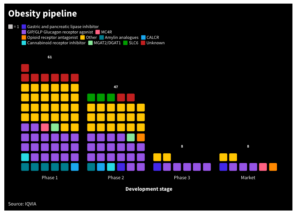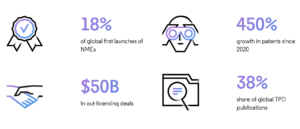It is not only since a US woman died of an infection with antimicrobial-resistant superbugs that antimicrobial resistance (AMR) is seen as one of the world’s most pressing public health issues. For some time, the use of antimicrobials in animals has been seen as an important contribution to this problem. Now, the European Medicines Agency (EMA) and the European Food Safety Authority (EFSA) have issued a
joint report that reviews the measures taken in the European Union to reduce antimicrobials use in animals. For the first time, authorities admit that there is no one-size-fits-all solution to the problem and that a multifaceted approach is needed, from governments to farmers. There are only a few new antibiotics in the development pipeline, hence those already available need to be used responsibly, both in humans and animals. Collecting data on AMR and antibiotic consumption is key to putting into place effective measures to control AMR and retain the effectiveness of antimicrobials for the benefit of public and animal health, says Professor Guido Rasi, EMA’s Executive Director.
SMEs fuel the pipeline
In this context, the small and medium sized companies active in the field of antimicrobial R&D underline their important role. SMEs are the keystone to fuel the pipeline by providing new innovative compounds and technologies and conducting both early and clinical stage research, says Marc Gitzinger, CEO of BioVersys. The Swiss antibiotics developer is among the around 50 SMEs belonging to the
BEAM alliance, a European consortium of small companies active in the field of antimicrobials. In the past decades, all antibiotics that moved into late stage clinical development or received market approval went at some point of their development through the hands of SMEs, he stresses. His own company is still in the preclinical phase and focuses on so-called Transcriptional Repressor Inhibiting Compounds (TRIC). The technology helps to restore the efficacy of approved antibiotics. By doing this, the company aims to optimise the treatment of multiresistant tuberculosis.
On 24th February, Gitzinger will be among the 30 speakers from all over Europe who will discuss current challenges in the antimicrobials market in Europe during the Berlin Conference on Novel Antimicrobials.
The BEAM alliance in particular is a major partner of the event, which is jointly organised by German BIOCOM and the British Department of International Trade. More than 15 European SMEs will present their technologies and drug candidates in the fight against AMR showing that there is not a lack of novel ideas.
One of the key activities for the BEAM alliance is to fight for more predictable, reliable and sustainable conditions, in particular for small businesses. Currently, bacterial infection management algorithms are based on generic drugs, empirical approach and mainly driven by the individual cost and benefit. Stewardship is at its infancy, Gitzinger explains some of the major hurdles. Accompanying the Berlin Conference, BEAM will publish a list of recommendations how SME R&D in the field could be supported in future. Among others, the alliance not only demands tailor-made regulatory guidances for adapted clinical trials, but also calls for a GAIN-act like specific designation that would adapt current reimbursement models to real societal benefits of new AMR compounds.


 IQVIA
IQVIA White House
White House Clarivate
Clarivate